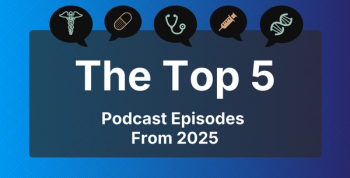
CMS Approves Extra Payments for CAR T, Increases Other Payments in Final Rule
CMS announced a raft of final rulemaking Thursday for 2019, including ending the so-called 25% rule for long-term care hospitals, and approving add-on payments estimated to cost about $72 million for chimeric antigen receptor (CAR) T-cell immunotherapy.
CMS announced a raft of final rulemaking Thursday for 2019, including ending the so-called 25% rule for long-term care hospitals, and approving add-on payments estimated to cost about $72 million for chimeric antigen receptor (CAR) T-cell immunotherapies.
In addition, the agency indicated an acknowledgement of the country’s rising uninsured rate and increased funding for Disproportionate Share Hospital (DSH) payments to protect against the expense of treating patients who cannot pay their bills.
The agency approved Medicare technology add-on payments for CAR T treatments, which are some of the most expensive cancer therapies ever invented. CMS will pay a maximum of $186,500 per case, starting in fiscal year 2019.
Tisagenlecleucel (Kymriah)—a treatment for children and young adults with B-cell acute lymphoblastic leukemia developed by Novartis—
As a result, CMS said in its
Separate from the technology add-on payments, a CMS spokesperson said it will assign inpatient cases involving CAR T treatments to a higher-weighted Medicare-severity diagnosis related group (DRG) related to bone marrow transplants. CMS first announced
A CMS spokesperson said it is possible the agency will look at future value-based arrangements, and it may consider a new DRG, but for now, it is sticking with the add-on payments while it collects claims data.
In addition, CMS said it will pay approximately $36,000 on average, before geographic and other payment adjustments, and the cases would also be eligible for outlier payments under the Inpatient Prospective Payment System (IPPS).
As part of the announcement, CMS finalized updates to Medicare payment policies and rates under the IPPS and also the Long-Term Care Hospital (LTCH) Prospective Payment System (PPS).
CMS finalized plans to end the 25% threshold policy for long-term care transfers. Plans to end the rule, after years of delaying its implementation, were announced in the spring. Had it gone into effect on schedule October 1, it would have cut Medicare payments to acute care hospitals if they transfer 25% of patients to a long-term care facility.
The IPPS/LTCH PPS final rule provides acute care hospitals an average pay raise of approximately 3%, reflecting rate updates required by law and payments for new technologies and uncompensated care. The LTCH PPS standard federal payment rate will rise by 1.35%. CMS projects that LTCH PPS payments will increase by approximately 0.9%, or $39 million, in 2019.
The changes include $1.5 billion in additional funds for DSH payments to protect hospitals from the expense of treating patients who cannot pay their bills. A CMS spokesperson said the payments are being updated due to additional information from the agency’s Office of the Actuary indicating that the number of people who are uninsured in the United States has risen.
Other changes CMS announced include:
Hospital price transparency
The agency finalized a rule improve access to hospital price information, making it mandatory for hospitals to post price information on the internet starting in 2020. Previously, hospitals were only required to provide the information when asked.
Interoperability (formerly called Meaningful Use)
CMS is reiterating the requirement for providers to use the 2015 Edition of certified electronic health record technology next year in order qualify for incentive payments and avoid cuts to Medicare payments. This technology includes the use of application programming interfaces (APIs), which have the potential to improve the flow of information between providers and patients. APIs can enable patients to collect their health information from multiple providers and incorporate it into an app, portal, program, etc. The move is aimed at allowing patients to have portable medical information they can share with multiple provider, to decrease duplication and improve communication.
Meaningful Measures
CMS said it is removing unnecessary, redundant and process-driven measures from several pay-for-reporting and pay-for-performance quality programs in the hope that hospitals will spend more time providing patient care.
These changes will remove a total of 18 measures from the programs and de-duplicate another 25 measures. In addition to the changes that apply to acute care hospitals, the final rule eliminates 3 measures in the LTCH Quality Reporting Program. Overall, the changes in the hospital quality and value measures will eliminate more than 2 million burden hours for hospitals impacted by the IPPS/LTCH PPS rule, saving them about $75 million annually after these changes are implemented, CMS said.
Newsletter
Stay ahead of policy, cost, and value—subscribe to AJMC for expert insights at the intersection of clinical care and health economics.








































